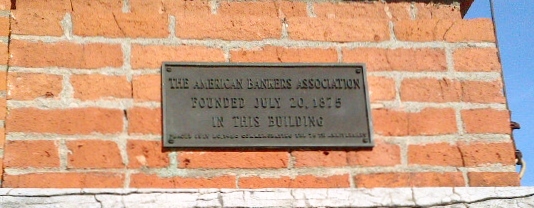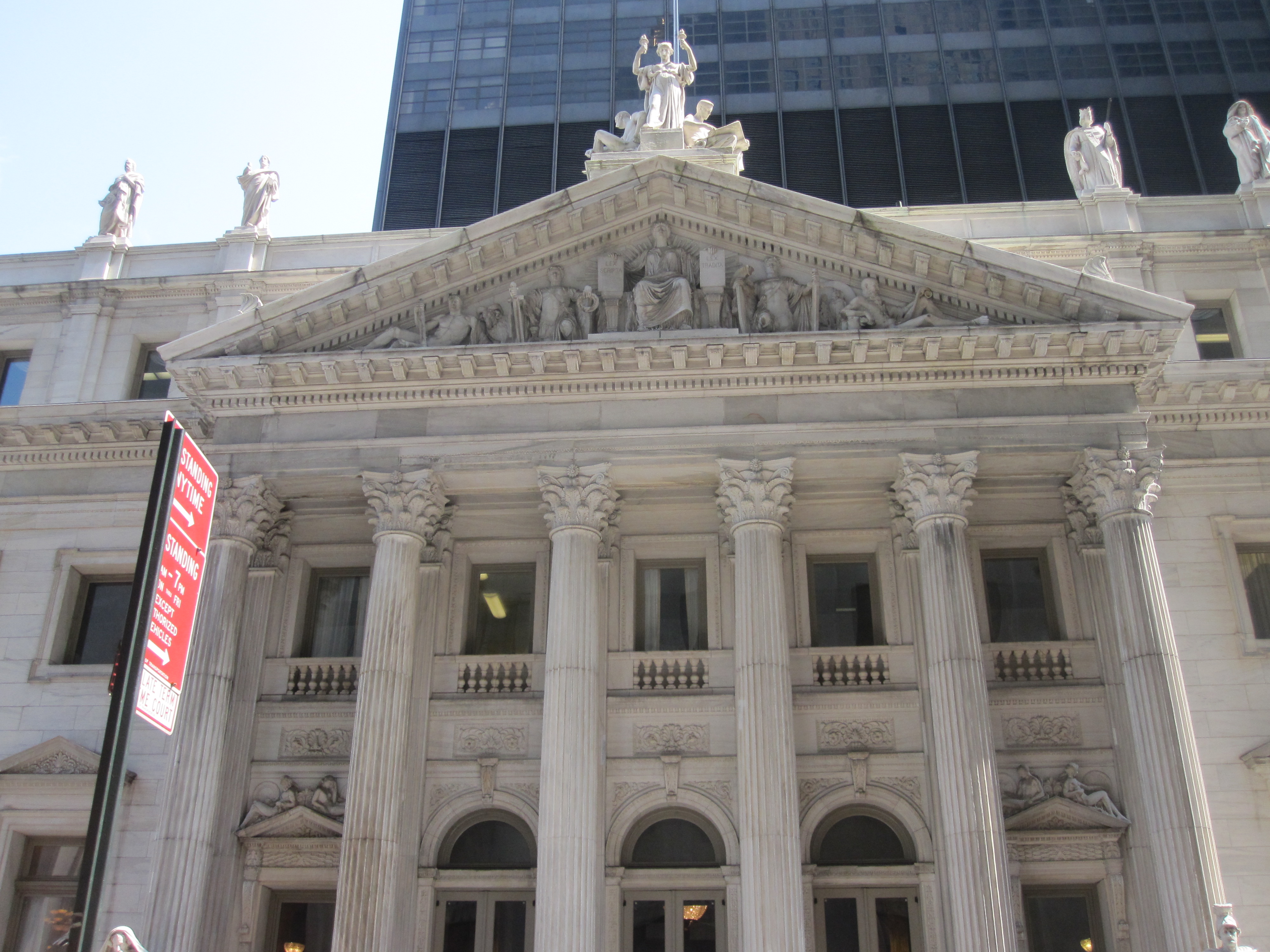|
Philo C. Calhoun
Philo Clark Calhoun (December 4, 1810 – March 21, 1882) was an American industrialist, banker, and politician who served as president of the Fourth National Bank of New York. Early life Calhoun was born on December 4, 1810, in Danbury, Connecticut, and reportedly "began life in poverty." He was the youngest of three, and only boy, born to Philo Calhoun (1776–1850) and Sally J. (née McLean) Calhoun (1778–1828). His older sisters were Mary Jane "Molly" and Nancy Calhoun. His paternal grandparents were the former Tabitha Clark and Dr. John Calhoun of Washington, Connecticut, a member of the Committee of Inspection in 1775 and a member of the Connecticut Legislature in 1782. Career When he was sixteen years old, he went to Bridgeport, Connecticut, to become an apprentice with Lyon, Wright & Co., a saddle and harness business. After he finished his term of service, his employer sent him to Charleston, South Carolina, as assistant manager of the firm there. The warm climate ... [...More Info...] [...Related Items...] OR: [Wikipedia] [Google] [Baidu] |
Fourth National Bank Of New York
The Fourth National Bank of New York was an American bank based in New York City. History The Fourth National Bank of New York was organized in January 1864. At the time of its organization, many, including Secretary of the Treasury Salmon P. Chase, thought that "a bank of large capital should be organized under such favorable auspices as would result in demonstrating the utility of the National Banking System, and would induce banks existing under the State system to take out charters under the National Banking Act." The Fourth National Bank was founded by many of New York's most eminent citizens, including Jay Cooke. The bank first opened its doors in the "old Government building" at 29 Pine Street. In 1866, however, the bank moved to a six-story white-marble building located at the northeast corner of Nassau and Pine Streets. In 1893, the capital stock of the bank was $3,200,000; a surplus of $1,350,000; it had net profits of $378,030; and average net deposits of $20,000, ... [...More Info...] [...Related Items...] OR: [Wikipedia] [Google] [Baidu] |
Connecticut House Of Representatives
The Connecticut State House of Representatives is the lower house in the Connecticut General Assembly, the state legislature (United States), state legislature of the U.S. state of Connecticut. The house is composed of 151 members representing an equal number of districts, with each constituency containing nearly 22,600 residents. Representatives are elected to two-year terms with no term limits in the United States, term limits. The House convenes within the Connecticut State Capitol in Hartford, Connecticut, Hartford. History The House of Representatives has its basis in the earliest incarnation of the General Assembly, the "General Corte" established in 1636 whose membership was divided between six generally elected magistrates (the predecessor of the Connecticut Senate) and three-member "committees" representing each of the three towns of the Connecticut Colony (Hartford, Connecticut, Hartford, Wethersfield, Connecticut, Wethersfield, and Windsor, Connecticut, Windsor). The Fu ... [...More Info...] [...Related Items...] OR: [Wikipedia] [Google] [Baidu] |
American Bankers' Association
The American Bankers Association (ABA) is a Washington, D.C.-based trade association for the U.S. banking industry, founded in 1875. They lobby for banks of all sizes and charters, including community banks, regional and money center banks, savings associations, mutual savings banks, and trust companies. The average member bank having approximately $250 million in assets. ABA is considered the largest financial trade group in the United States. The group offers training, certification, news, research, advocacy, and community for bankers and members of the financial services in America. History The origins of the American Bankers Association are in the Panic of 1873, when St. Louis, Missouri banker James Howenstein found himself in "a tight squeeze," with only a few hundred dollars in funds and millions of deposits to pay. Relying on help and intelligence from peer bankers in the form of frequent correspondence, Howenstein escaped his dilemma and realized the value of a banke ... [...More Info...] [...Related Items...] OR: [Wikipedia] [Google] [Baidu] |
Madison Avenue
Madison Avenue is a north-south avenue in the borough of Manhattan in New York City, United States, that carries northbound one-way traffic. It runs from Madison Square (at 23rd Street) to meet the southbound Harlem River Drive at 142nd Street. In doing so, it passes through Midtown, the Upper East Side (including Carnegie Hill), East Harlem, and Harlem. It is named after and arises from Madison Square, which is itself named after James Madison, the fourth President of the United States. Madison Avenue was not part of the original Manhattan street grid established in the Commissioners' Plan of 1811, and was carved between Park Avenue (formerly Fourth) and Fifth Avenue in 1836, due to the effort of lawyer and real estate developer Samuel B. Ruggles, who had previously purchased and developed New York's Gramercy Park in 1831, and convinced the authorities to create Lexington Avenue and Irving Place between Fourth Avenue (now Park Avenue South) and Third Avenue in order to s ... [...More Info...] [...Related Items...] OR: [Wikipedia] [Google] [Baidu] |
Pneumonia
Pneumonia is an inflammatory condition of the lung primarily affecting the small air sacs known as alveoli. Symptoms typically include some combination of productive or dry cough, chest pain, fever, and difficulty breathing. The severity of the condition is variable. Pneumonia is usually caused by infection with viruses or bacteria, and less commonly by other microorganisms. Identifying the responsible pathogen can be difficult. Diagnosis is often based on symptoms and physical examination. Chest X-rays, blood tests, and culture of the sputum may help confirm the diagnosis. The disease may be classified by where it was acquired, such as community- or hospital-acquired or healthcare-associated pneumonia. Risk factors for pneumonia include cystic fibrosis, chronic obstructive pulmonary disease (COPD), sickle cell disease, asthma, diabetes, heart failure, a history of smoking, a poor ability to cough (such as following a stroke), and a weak immune system. Vaccines to ... [...More Info...] [...Related Items...] OR: [Wikipedia] [Google] [Baidu] |
Union Club Of The City Of New York
The Union Club of the City of New York (commonly known as the Union Club) is a private social club in New York City that was founded in 1836. The clubhouse is located at 101 East 69th Street on the corner of Park Avenue, in a landmark building designed by Delano & Aldrich that opened on August 28, 1933. The Union Club is the oldest private club in New York City and the fifth oldest in the United States,"Waitresses at Union Club" ''The New York Times'' (June 19, 1918) after the in (between 1700 and ... [...More Info...] [...Related Items...] OR: [Wikipedia] [Google] [Baidu] |
Union League Club Of New York
The Union League Club is a private social club in New York City that was founded in 1863 in affiliation with the Union League. Its fourth and current clubhouse is located at 38 East 37th Street on the corner of Park Avenue, in the Murray Hill neighborhood of Manhattan. It was designed by Benjamin Wistar Morris and opened on February 2, 1931.About the Club Union League Club website, accessed November 21, 2008 The building was designated a on October 25, 2011. The club is considered one of the most prestigious in New York City. |
_LCCN2002723398.jpg)


.jpg)